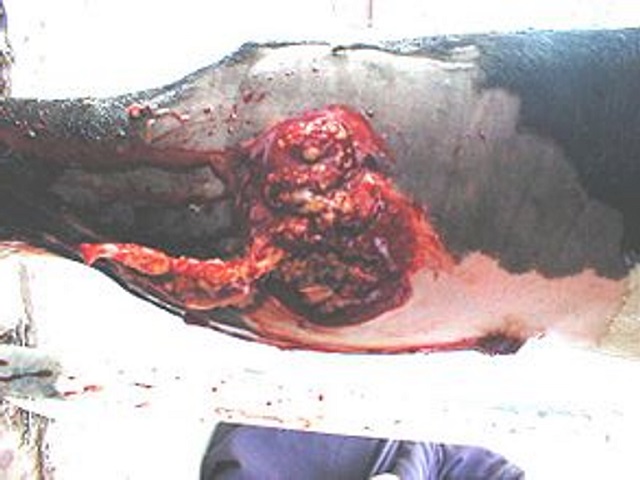
The Sunday News

THIS week we talk about a common infection in cattle which is observed mainly during summer. It can also occur even during the dry season.
This is a condition called parafilariasis or hemorrhagic dermatitis commonly known as summer bleeding.
While the terms are obviously mouthfuls, I am convinced that most farmers have experienced this condition in their herds.
The signs are very difficult to miss as you will notice your animal bleeding around the neck and shoulder area.
It looks like it has been pricked by something sharp like thorns or wire.
This is what is commonly called summer bleeding. Parafilariasis is caused by a nematode called Parafilaria bovicola in cattle and Parafilaria multipapillosa in horses. The transmission of the nematode is thorough a certain type of flies.
These flies become infected with microfilariae when they feed on the wounds that cause the worms in the skin of infected hosts.
Microfilariae develop to infective larvae inside the flies in a few weeks.
Such flies re-infect their hosts while feeding, often on eye tears or other exudates from skin wounds. These larvae penetrate into the skin up to the dermis and migrate further to other locations of the body surface especially the neck, shoulders and rump, where they complete development to adults and cause the appearance of nodules.
To lay eggs female worms make a hole in the nodule, which results in so-called summer bleeding.
The only external signs of infection in cattle are localised cutaneous hemorrhages or bleeding spots that may ooze for some hours before clotting and drying in the hair of the coat.
Bleeding spots are induced by the female worm, which causes the formation of a small nodule and perforates the skin.
The hemorrhagic dermatitis may cause subcutaneous oedema.
Carcasses of infected animals display irregular, oedematous, greenish yellow lesions that resemble bruising.
These are usually superficial but occasionally underlying muscles are extensively involved.
Main economic loss results from trimming or even full carcass rejection or down grading of hides after slaughter in severe cases.
A key management practice to prevent or at least reduce cattle infection with these worms is to control the vector flies.
However, muscid flies which transmit the larvae are not easy to control, because such flies can feed on many other hosts or substrates.
Treating cattle with insecticides is often insufficient to reduce the population of these flies, which means that there will always be enough flies around to transmit the disease.
Strict sanitation of cattle facilities such manure removal can contribute to reducing the fly population.
Dipping animals with pyrethroid based dipping chemicals have been recorded to significantly reduce infections due to control of transmitting vectors.
Many classic anthelmintics which are your usual dosing remedies are not effective against these worms.
However several macrocyclic lactones are effective against adult worms.
The macrocyclic lactones are mostly the injectable drugs for controlling both internal and external parasites. These are the range of drugs with names that usually have a “mectin” at the end such as Ivomectin and Bi-mectin.
These are however not able to control migrating larvae. This means that after treatment new nodules may appear due to surviving larvae.
Animals should be treated at least 70–90 days before slaughter to provide sufficient time for lesions to resolve.
It is therefore important for farmers to have this type of injectable parasite controlling remedy so that you can treat your animals when you notice existence of summer bleeding in your herd. Uyabonga umntakaMakhumalo.
Feedback [email protected] <mailto:[email protected]> cell 0772851275.



